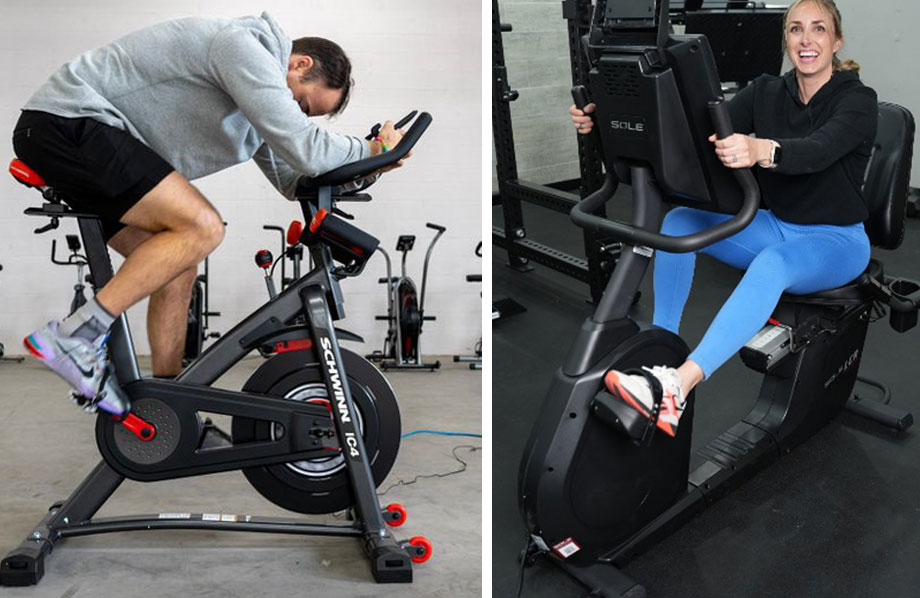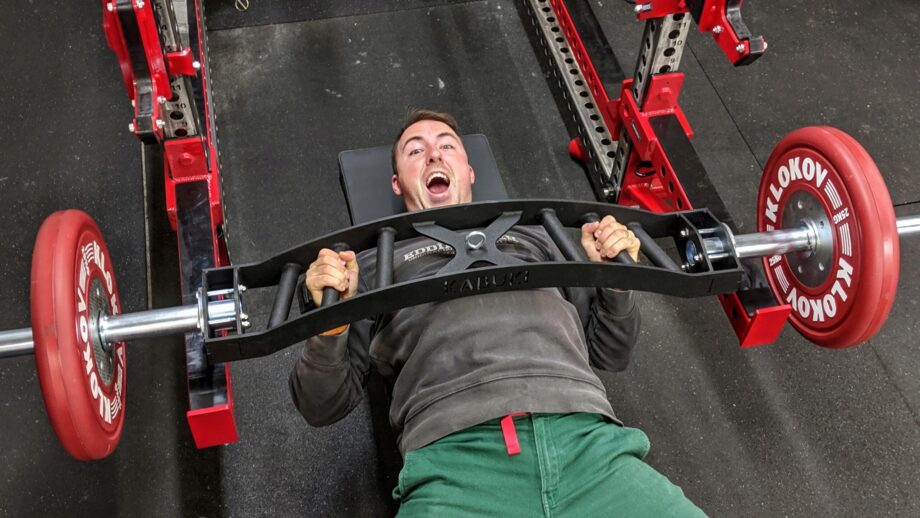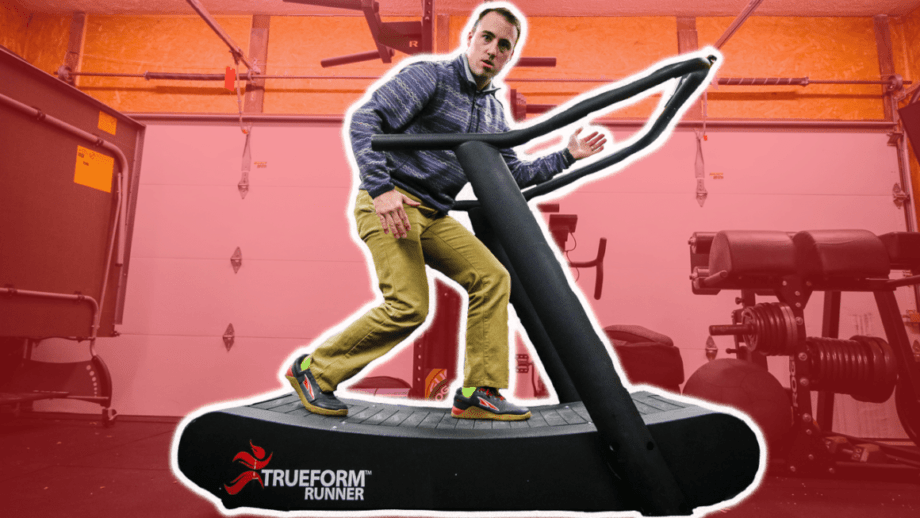Stationary bikes—and the best cardio machines in general—can crank up the intensity of your home gym, but there’s more than one type of exercise bike to get your gears running. We’re looking at two of the top contenders side by side for this spin bike vs exercise bike matchup. They’re each a solid piece of fitness equipment but lend themselves to different fitness goals.
For a quick beginner comparison, a spin-style bike better mimics a road bike and typically offers a more realistic, intense ride. In contrast, exercise bikes provide a solid cardio workout, but rides usually are less intense.
The final decision on which bike to use comes down to the kind of workout you want, your fitness level, and your budget. Do you like the full-body workout intensity of a spin-style class for weight loss? Or are your indoor cycling training goals more about getting your heart rate up to help improve your cardiovascular fitness while protecting your joints?
Keep reading for our expert guide to the subtle (and not-so-subtle) differences between these popular pieces of cardio fitness equipment.
Editor’s note: While the terms “spin bike” and “spinning” are considered commonplace in the exercise bike industry, we acknowledge that these terms are trademarked and owned by Mad Dogg Athletics, Inc. Therefore we will refer to them as “spin-style bikes.“
What Are Spin Bikes?
Spin-style bikes have a streamlined design, with the seat and handlebars at approximately the same level. The design of this exercise equipment puts riders in a position similar to outdoor cycling. These bikes have heavy flywheels and clipless pedals, though the pedal varies by model. You can swap out the pedals and saddles on many spin bikes.
A heavy flywheel creates realistic, intense resistance. When combined with a spin-style bike’s sturdy but sleek frame build, riders can stand on these bikes to build more speed at higher resistance levels. Standing activates both your lower and upper body, resulting in a full-body workout and higher calorie burn. Some models even have decline, incline, and/or tilting features to make your workouts as realistic as possible.
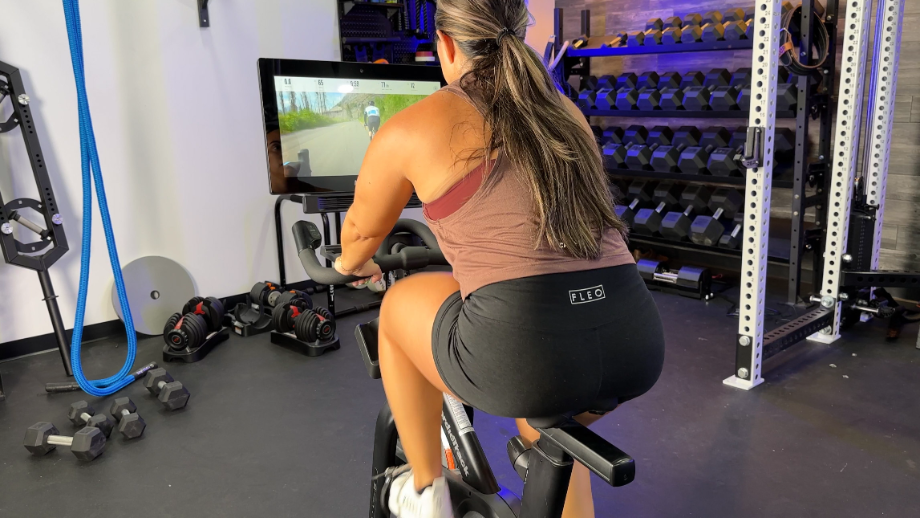
Spin-style bikes typically use magnetic resistance, which is quiet, smooth, and efficient but can have a short lag in resistance changes. The bike may have a set number of magnetic resistance levels or variable resistance controlled with a dial or lever.
RELATED: Best Exercise Bikes Under $500
The saddle (aka seat) is typically thin with little padding. You can swap out the saddle for one you prefer with some models. The pedals may also be interchangeable with other types of pedals and/or shoes, but it varies by model. While most offer a clipless pedal system, some models also have a cage or strap for those who don’t have clipless shoes. Spin-style bikes typically include vertical and horizontal seats and handlebar adjustability for a more comfortable ride.
Overall, spin-style bikes offer a more intense workout that is still low-impact. Many have a simple display that shows speed, distance, time, and watts for minimal riding distractions. Some models come with heart rate monitors or large display screens where you can follow workout programs through integrated or third-party apps. Apps may also offer a variety of other workout types, like HIIT, strength training, or interval training.
RELATED: Best Cycling Apps
Benefits of Using a Spin Bike
- Heavy flywheel creates added resistance, harder workouts, and the potential for a higher calorie burn
- Offers high-intensity workouts that mimic outdoor bike riding conditions
- Option to stand while on the bike activates your upper body for a full-body workout
What Are Exercise Bikes?
These types of stationary bikes feature a seat set lower than the handlebars, creating an upright riding position. They have a seat with a back and the pedals in front instead of underneath the rider. (The best recumbent exercise bikes and air bikes also fall into this category.)
The riding position, combined with more expansive, cushioned seats (and sometimes seats with backs as with recumbent bikes), creates a more comfortable ride that keeps the spine upright. However, some exercise bikes sacrifice workout intensity in favor of comfort.
Exercise bikes can have magnetic or friction resistance, though the resistance is generally lower than a spin bike because they have lighter flywheels. These bikes are made for low- to mid-intensity, low-impact workouts. However, you can crank up the resistance and push your speed to increase your intensity.
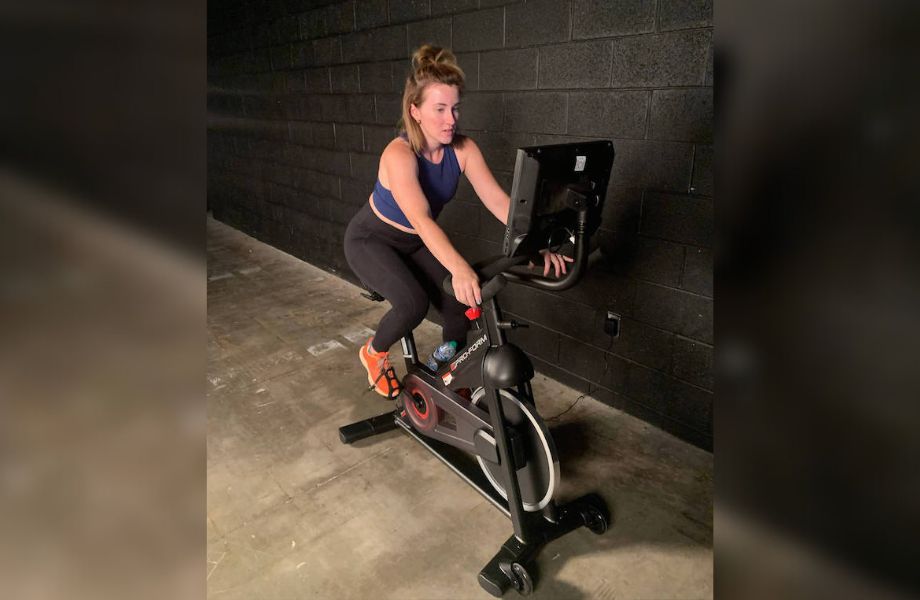
As far as value, they range from inexpensive, foldable models to heavy-duty bikes with plenty of functionality by way of swiveling touchscreens and integrated fitness apps loaded with virtual courses, cycling classes, and off-bike workout routines. These models sometimes have adjustable handlebars with several handhold positions. You can adjust the bike seat height, but upright exercise bikes may have a seat that allows height adjustments but not the distance from the seat to the handlebars.
Like most bikes, they’re gentler on joints. Additionally, this type of indoor bike may help reduce stress on your lower back1 when compared to other forms of cardio. But remember that back pain varies and depends on the seat position, handlebar position, and preferred riding position. Finally, you may not have the option to stand, which means you’re less likely to engage your full body.
RELATED: Best Exercise Bikes
Benefits of Using an Exercise Bike
- More comfortable with large cushioned seats and sizeable pedals
- Doesn’t require special cycling shoes
- Offers a low- to mid-intensity ride, great for those with mobility issues
- Can be used by people of all fitness levels
Spin Bike Vs Exercise Bike: Comparison Table
| NordicTrack Commercial VU 29 (exercise bike) | Schwinn IC4 (spin-style bike) | |
| Resistance type | Magnetic | Magnetic |
| Resistance levels | 24 | 100 |
| Footprint | 55.29″ H x 24.86″ W x 41.49″ L | 51.8″ H x 30.7″ W x 54.6″ L |
| Display | 14″ HD Smart Touchscreen | Backlit LCD metric console |
| Integrated app | Integrated iFIT app | Compatible with JRNY app |
| Weight capacity | 325 lbs | 330 lbs |
| Pedals | Oversized pedals with adjustable strap | SPD clips and toe cages |
| Adjustability | 4-way seat adjustment | 4-way adjustable handlebars and seat |
| Extras | Bluetooth compatibility, SmartAdjust resistance, Google Maps | Bluetooth-enabled heart rate armband monitor, USB charging station, dumbbell holder, water bottle holder |
| Price | $899 | $999 |
RELATED: Schwinn IC4 Review
Differences Between a Spin Bike and an Exercise Bike
The differences between these types of bikes are subtle in some cases and more evident in others. However, they’ll change your workout intensity and the types of workouts you can do.
Muscles Targeted
Both types of bikes will activate your lower body, with the quadriceps and the hamstrings2 being the primary movers. However, the calves, as shown in a 2017 study published in the Journal of Experimental Biology3, and the glutes, as shown in a 2019 study published in the Journal of Electromyography and Kinesiology4, are also involved when riding either type of bike.
There’s some variation in the workload of each muscle group based on the seat and handlebar height and whether or not you’re seated or standing. That said, you’re more likely to stand on a spin-style bike, activating your upper body more, as shown in a 2019 study published in Research Quarterly for Exercise and Sport5, This level of activation gives you the option of full-body workouts and the potential to increase your calorie burn.
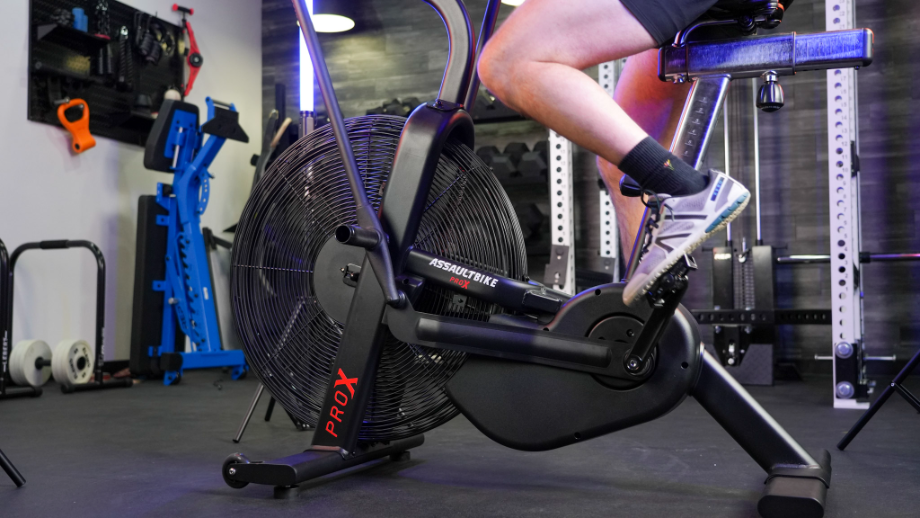
RELATED: Activities That Burn the Most Calories
Difficulty
Stationary bikes—spin, exercise, or other—are fairly simple to use. They’re a good option for regular exercise for people with balance problems or joint issues. However, strictly comparing these types of bikes, exercise bikes are generally easier to use than spin bikes.
For example, spin-style bikes typically have clipless pedals of some kind. Some people may struggle to mount a bike with a clipless system, though some spin-style bikes have a dual pedal design with toe cages and clipless pedals. Exercise bikes are more likely to have a toe cage or strap that doesn’t require specialized shoes.
RELATED: Stationary Bike Workout For Beginners
A spin-style bike’s heavier flywheel also takes more effort to pedal, whether going low and slow or breaking a land speed record. A smaller seat (though you can usually swap them out) and a forward-leaning riding position are other factors that can make a spin bike more difficult to ride.
Riding Position
By design, spin-style bikes have seats and handlebars close to or at the same level. However, riding can lead to lower back pain if the handlebars are too low⁶ (or the seat is too high). Some spin-style bikes offer different handhold positions and four-way handlebar and seat adjustment so you can vary your riding position.
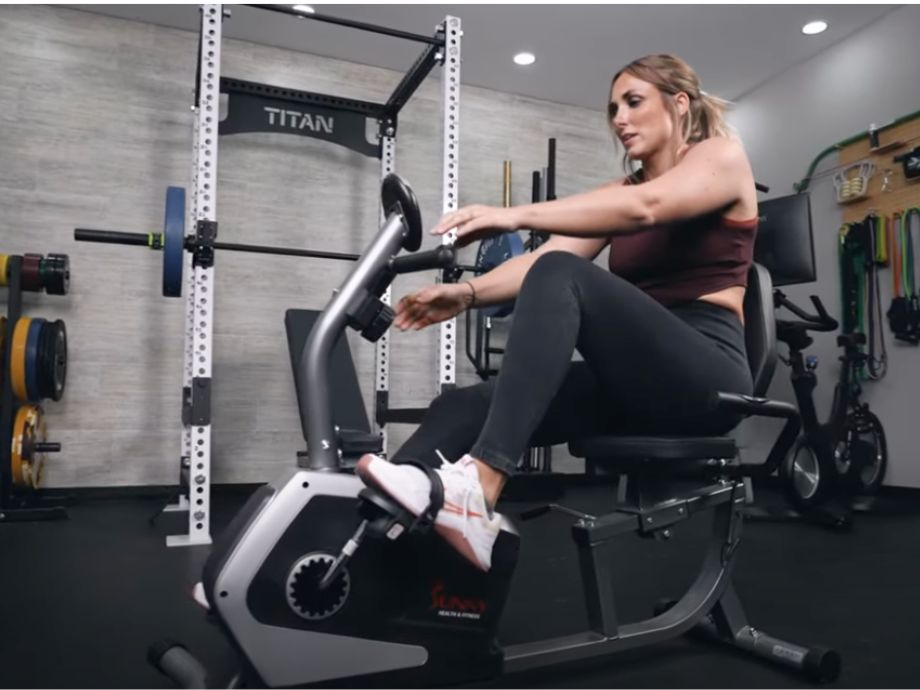
Exercise bike handlebars are higher than the seat, putting the rider in an upright position,which can be gentler on the lower back. These types of bikes don’t usually have handlebar adjustability, though the seat height and sometimes horizontal position are often adjustable.
How To Choose Between a Spin Bike and an Exercise Bike
Choosing between a spin-style bike and an exercise bike comes down to your health factors and fitness goals. Here’s a quick look at the pros and cons of each bike type.
Spin-Style Bike
Pros: Spin-style bikes are an excellent option for cyclists recovering from injury or during off-season training. A spin-style bike’s heavy flywheel and sturdy frame allow for high-intensity, full-body workouts.
But they’re not without a few downsides. Spin bike cons can include:
- Not as comfortable to ride
- May require specialty clipless cycling shoes
- Can be expensive, depending on the features
- May lack a display to follow workouts or watch entertainment
Exercise Bike
Pros: Exercise bikes are comfortable and may reduce stress on your lower back. If you’re new to cycling, you’ll find one of these bikes easy to ride with little experience. Exercise bikes are also more likely to include health metric monitors with integrated fitness apps. They’re a great option if you’re looking for a moderate to high-calorie burn through low to moderate-intensity workouts.
However, exercise bike cons may include:
- Lower-body workouts only and no standing on the bike frame
- Better for low- to moderate-intensity workouts
- Doesn’t mimic the feel of riding a road bike
Spin Bike Vs Exercise Bike: Final Thoughts
While spin-style bikes are better for high-intensity workouts, your speed and resistance levels can create a solid workout of any level, no matter which bike you ride. Take a good look at your goals, and keep the following in mind:
- Spin-style bikes better mimic a road bike in riding position and workout intensity.
- Exercise bikes can be more comfortable, especially if you have little cycling experience.
- You can stand on a spin-style bike for an intense, full-body workout.
- Both types of bikes may have a heart rate monitor with integrated workout options, but spin bikes are more likely only to have a small display with basic training metrics.
- Spin-style bikes tend to cost more than the average exercise bike
Spin Bike Vs Exercise Bike: FAQs
Does a spin bike burn more calories than an exercise bike?
Calorie burn depends on many factors, like size, weight, speed, and resistance level. Consequently, you can do a high-intensity workout on either type of bike. But a spin-style bike’s option to stand and do a full-body workout makes it easier to burn more calories.
Is 20 minutes on a spin bike enough?
The Centers for Disease Control and Prevention (CDC)⁷ recommends 150 minutes of moderate-intensity exercise (or 75 minutes of vigorous-intensity exercise) per week.
So, doing 20 minutes a day on the spin-style bike may be enough, depending on your intensity. Look at how many minutes you’re racking up throughout the entire week, and keep tabs on how hard you’re working.
Can you use a spin bike as a normal exercise bike?
You can use a spin-style bike as a normal exercise bike. Most have adjustable handlebars and seats so you can find a comfortable riding position closer to an exercise bike’s upright position. A spin-style bike with a flywheel might be harder to activate than an exercise bike, but you can cycle at any speed you want.
References
- Gordon R, Bloxham S. A Systematic Review of the Effects of Exercise and Physical Activity on Non-Specific Chronic Low Back Pain. Healthcare (Basel). 2016 Apr 25;4(2):22. doi: 10.3390/healthcare4020022. PMID: 27417610; PMCID: PMC4934575.
- Rendos, NK, et al. (2015). Interactive Effects of Body Position and Perceived Exertion During Spinning Exercises. The Journal of Strength and Conditioning Research. 29(3): 692-699. DOI: 10.1519/JSC.0000000000000699
- Dick, TJM, et al. (2017). Comparison of human gastrocnemius forces predicted by Hill-type muscle models and estimated from ultrasound images. Journal of Experimental Biology. 220(9): 1643-1653. https://doi.org/10.1242/jeb.154807
- Ando, R, et al. (2019). Neuromuscular activation of the knee and hip extensor muscles during high-intensity interval and moderate-intensity constant cycling. Journal of Electromyography and Kinesiology. 44: 64-69. https://doi.org/10.1016/j.jelekin.2018.11.012
- Sepp, T., et al. (2019). Upper body posture and muscle activation in recreational cyclists: Immediate effects of variable cycling setups. Research Quarterly for Exercise and Sport. 91(2): 298-308. https://doi.org/10.1080/02701367.2019.1665620
- Streisfeld, G. M., Bartoszek, C., Creran, E., Inge, B., McShane, M. D., & Johnston, T. (2017). Relationship Between Body Positioning, Muscle Activity, and Spinal Kinematics in Cyclists With and Without Low Back Pain: A Systematic Review. Sports Health. 9(1), 75-79. https://doi.org/10.1177/1941738116676260
- Centers for Disease Control and Prevention. Adult Activity: An Overview. https://www.cdc.gov/physical-activity-basics/guidelines/adults.html



